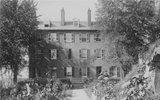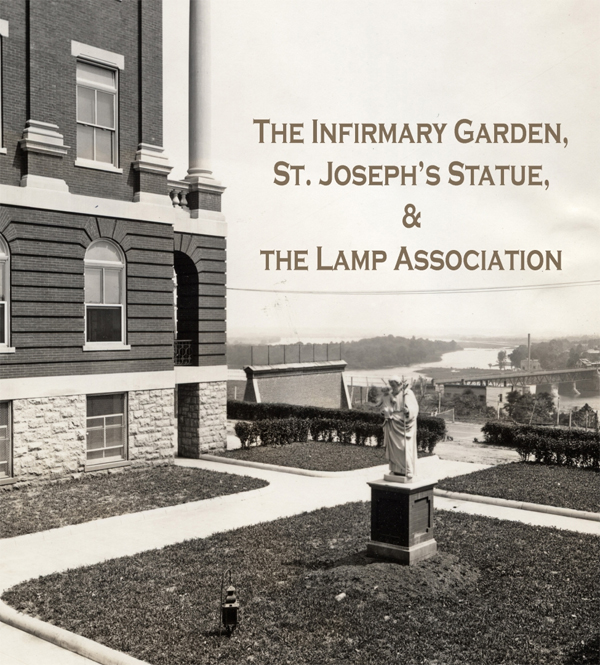
In 1872, a garden was planted on the south side of Georgetown’s campus, between Gervase and Mulledy Halls. The centerpiece of the garden was a statue of St. Joseph, which remained until construction began in that area last year. Now, through a new online exhibition from the University Archives, see the history of this peaceful spot in the historic heart of campus.
The garden came through time to be known as the Infirmary Garden because of its proximity to Gervase, which housed the campus infirmary at that time. While the appearance and size of the garden have changed over time, one constant element has been the inclusion of a statue of St. Joseph. The garden is currently going through another incarnation as part of the Former Jesuit Residence rehabilitation into a living community for upperclassmen.
Through scans of photographs and documents from the University Archives, explore the evolution of the space and its role at the University.

“Infirmary Garden” and the west side of Ryan Hall, between 1904 and 1913
This photograph illustrates how the footprint of the original garden was impacted by the construction of Ryan Hall. After Ryan was completed, the plants were replaced by grass and paving stones. Note the object on the lawn in front of the statue – it is the original lamp for which the Lamp Association purchased oil. In the background, the top portion of a hand ball court can be seen in front of Ryan Hall and, to the right of that, the Aqueduct Bridge spanning the Potomac. The Aqueduct Bridge closed in 1923 after Key Bridge was completed and was demolished in 1933.
